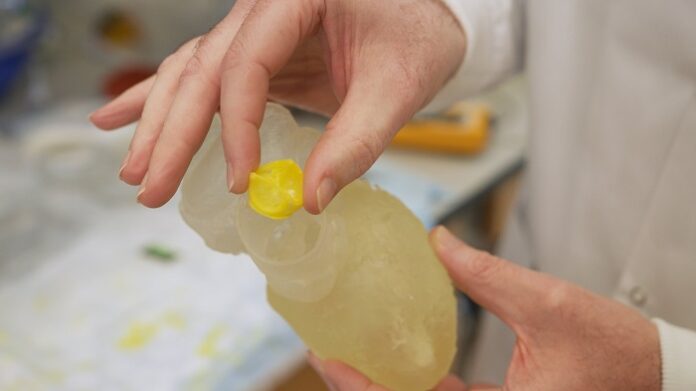

The Challenge of Heart Valve Disease
Each year, over 5 million people in the U.S. are diagnosed with heart valve disease. Currently, there is no long-term effective treatment. Severe damage caused by birth defects, aging, or lifestyle choices disrupts blood flow, leading to potentially fatal complications if left untreated.
Limitations of Current Treatments
Valve replacement and repair remain the only options for managing severe valvular heart disease. However, both require multiple surgeries, which are costly, disruptive, and risky. Most replacement valves, made from animal tissue, last only 10 to 15 years before needing replacement. For pediatric patients, treatment options are even more limited, often requiring repeated interventions as they grow.
A Breakthrough in Heart Valve Technology
Researchers at Georgia Tech have developed a groundbreaking 3D-printed heart valve made from bioresorbable materials. This personalized device is designed to fit an individual’s anatomy, allowing the body to absorb it over time while new tissue naturally regenerates to replace the valve’s function.
Innovators Behind the Technology
This revolutionary technology emerged from the labs of Lakshmi Prasad Dasi and Scott Hollister in the Wallace H. Coulter Department of Biomedical Engineering at Georgia Tech and Emory University.
“This technology represents a paradigm shift,” said Dasi, Rozelle Vanda Wesley Professor at BME. “We are moving away from short-lived animal tissue valves toward a regenerative approach where a heart valve can develop inside the patient.”
Addressing the Unique Challenges in Pediatric Care
Pediatric patients face unique challenges as their growing hearts require frequent valve replacements. Hollister, an expert in tissue engineering and 3D printing for pediatric medical devices, emphasized the potential impact. “Children must undergo multiple surgeries as their heart valves change in size. With this new technology, they could grow their own valve tissue, reducing the need for repeated replacements.”
Combining 3D Printing with Bioresorbable Materials
While 3D-printed heart valves and bioresorbable materials have been used separately, this is the first time both technologies have been combined. The goal is to move beyond a one-size-fits-most approach and create patient-specific implants that last longer than current alternatives.
Material and Functionality
As reported by medicalxpress, the research team identified the right material—poly(glycerol dodecanedioate)—to create a biocompatible and shape-memory heart valve. The valve folds for catheter-based delivery, eliminating the need for open-heart surgery. Once implanted, it unfolds at body temperature and signals the body to regenerate tissue. Within months, the original valve dissolves, leaving behind a fully functional, naturally grown heart valve.
Rigorous Testing for Durability
Srujana Joshi, a Ph.D. student in Dasi’s lab, has played a key role in testing and optimizing the valve’s design and materials. “Developing an implant takes extensive fine-tuning and testing to ensure the right material, design, and manufacturing parameters,” Joshi explained. The team uses computational models, benchtop studies, and heart simulation setups to evaluate the valve under real physiological conditions. A durability machine further simulates millions of heartbeats to ensure long-term reliability.
A Paradigm Shift in Medical Implants
Developing a material that functions as a heart valve while promoting new tissue growth is a significant challenge. Medical devices also face a long journey from research to clinical use, requiring several regulatory milestones.
Dasi and Hollister believe their innovation could revolutionize heart valve treatment and pave the way for more tissue-engineered medical devices. “Pediatric implants receive less attention due to the rarity of child-specific diseases and high production costs,” they noted. By combining bioresorbable materials with 3D printing, the team aims to bridge this gap and create more effective solutions.
Looking Ahead: A Future of Regenerative Heart Valves
“Our goal is to first help pediatric patients who have no alternative treatments,” Dasi said. “Over time, we hope to demonstrate that all heart valves should be made this way, benefiting both children and adults alike.”























